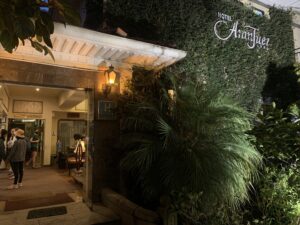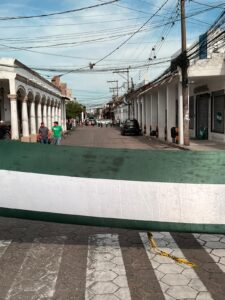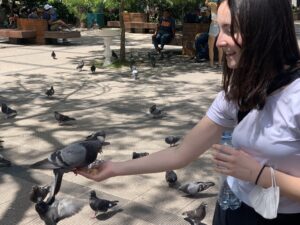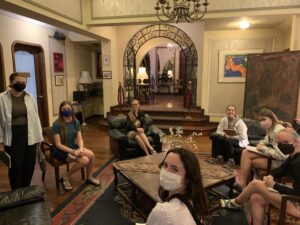
After 36 hours of sitting in airports, on three flights (MSP to Chicago, to Sao Paolo, to Santa Cruz, Bolivia), and a chartered bus, we arrived in Santa Cruz de la Sierra to start our course on the impacts of climate change in Bolivia. While we were traveling I learned that the demonstrations that had been happening in Santa Cruz had succeeded in blockading the roads out of town. This meant that our first four days in the Chiquitanía region east of Santa Cruz would need to be put on hold. And our entire course schedule rearranged. But it was great to leave a city blanketed in a winter storm warning and fly in to a city lined with palm trees and surrounded by green hills.
On December 28, the national police arrested the Governor of the Santa Cruz department for inciting a “coup” against Evo Morales, then president of Bolivia, and forcing his exile to Argentina in 2019. To those in Santa Cruz, they succeeded in forcing the removal of a president who had falsified an illegal fourth election as president through ballot stuffing and other electoral irregularities. This dispute over what happened reflects a regional power struggle. Santa Cruz department is the economic powerhouse in the low eastern side of the country, with most of the good agricultural land and much of the industry, but the political power resides with the highlands due to the number of voters there. Santa Cruz has long wanted more political power, and in fact, before the rise of Evo Morales, the first indigen

ous president of Bolivia, enjoyed much more power than it does now. With indigenous empowerment came a shifting of political power, for in this country over 60% of people identify as indigenous. In any case, after the national government arrested and whisked away Luiz Fernando Camacho, the Santa Cruz governor, street protests erupted in Santa Cruz. Mostly this meant clashes with police at night and marches during the day.
With the roads out blockaded, we opted to fly to Cochabamba, the next step of our journey, and rearrange the locations to try to come back to Chiquitanía at the end of our time. Leaving the downtown area after lunch, we saw the green and white banners of Santa Cruz popping up in the main plaza in front of the cathedral, news people with big video cameras, and trucks blaring patriotic music. It was time to leave.

